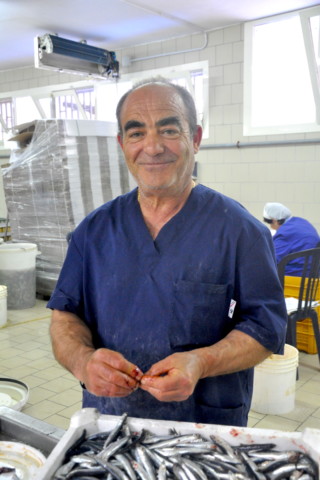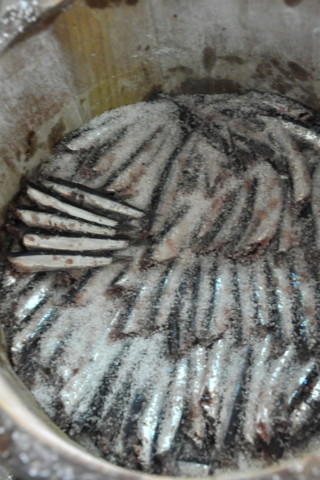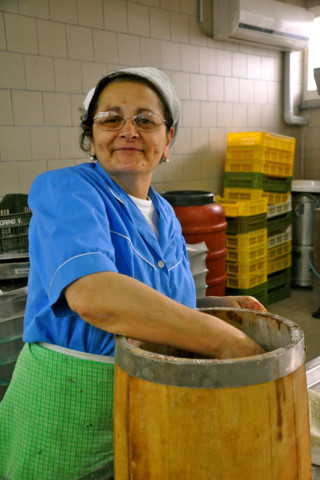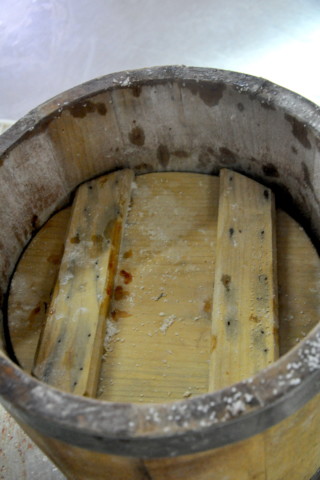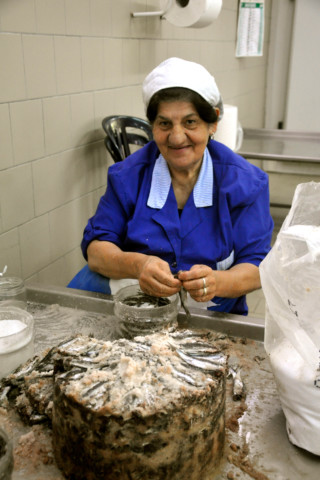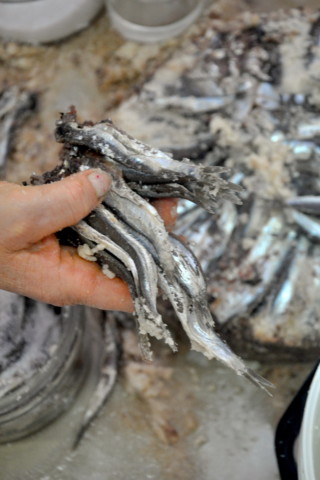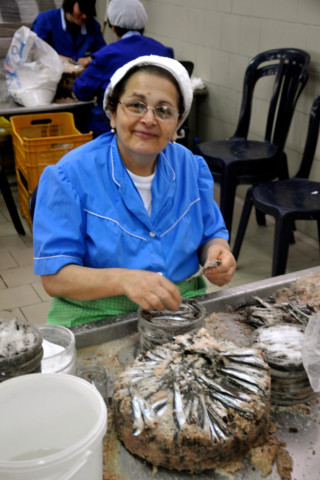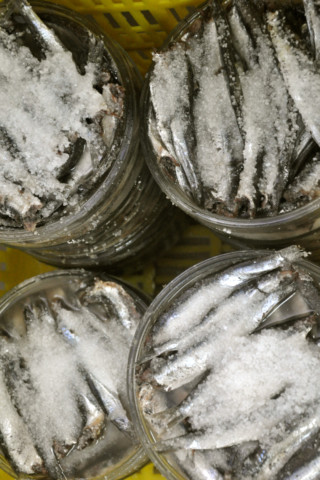Preserved Anchovies & Colatura di Alici di Cetara – Delfino Battista
Cetara, a tiny fishing village in the province of Salerno on the Amalfi Coast, is well-known for its active port and fishing fleet that specializes in tuna and anchovy fishing —as well as the ancient maritime tradition of their beyond perfect preservation.
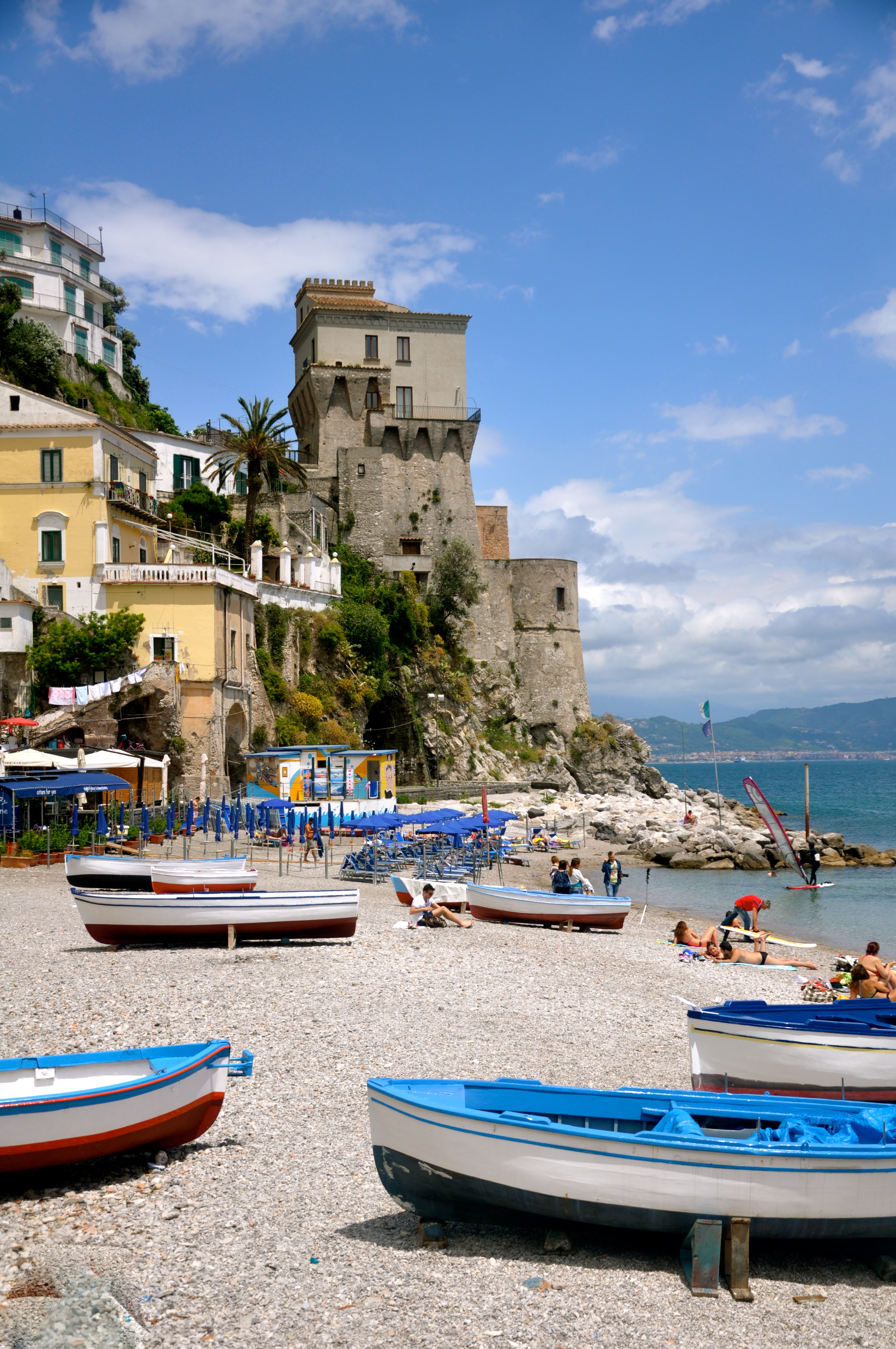
The village sits at the foot of Mount Falesio overlooking the crystal blue waters of the Tyrrhenian Sea, a small sandy beach speckled with colorful wooden boats, and an ancient Saracen watchtower. The views are quite fable-like, a picture book, in fact—exactly as one would envision a tiny Italian coastal village that has sustained itself since ancient times with its lively and rich maritime culture to be.
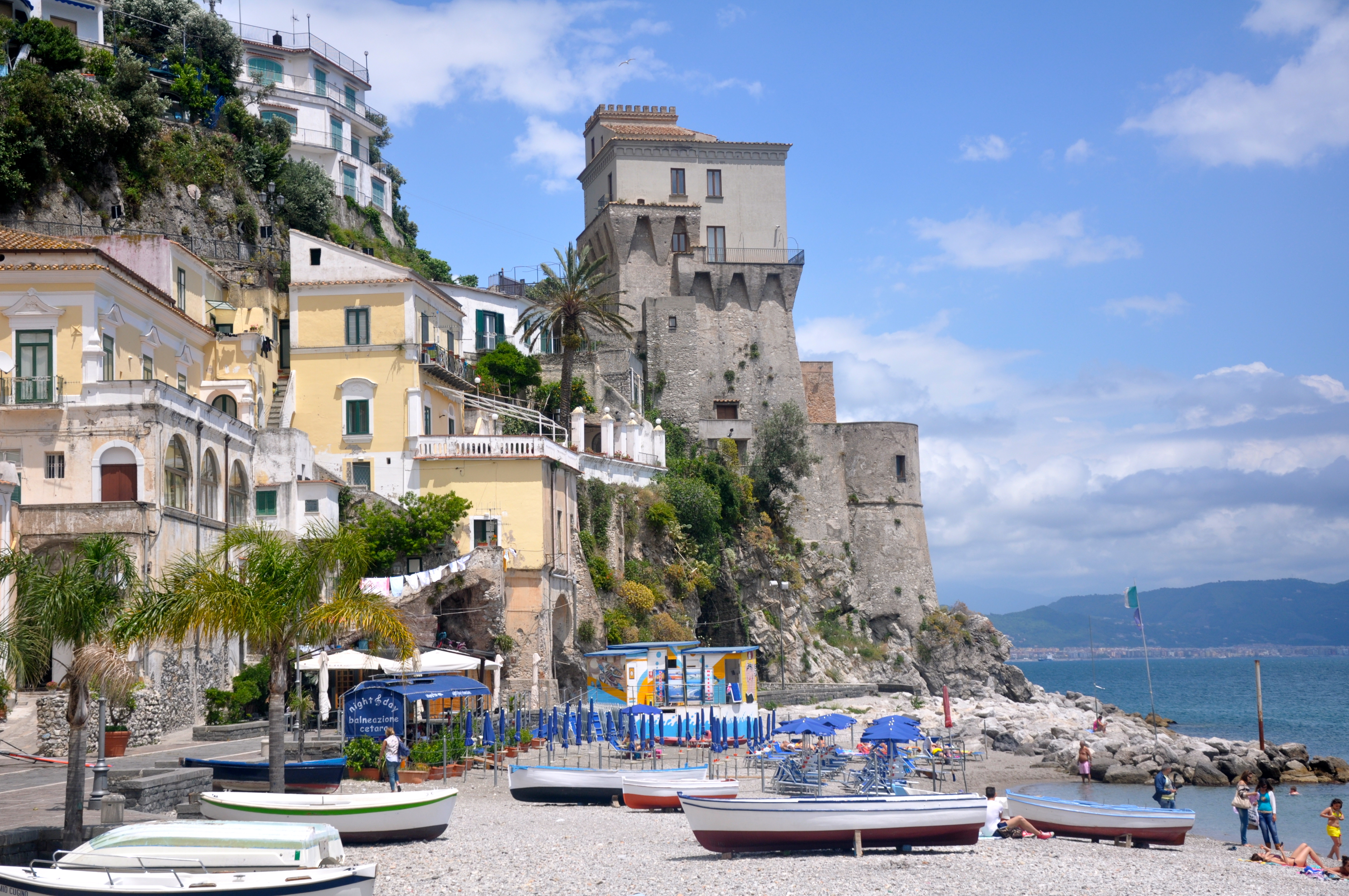
On a recent trip I visited the Delfino Battista factory, one of the villages premier commercial producers of preserved anchovies. I met with Gina Ferrigno, the daughter-in-law of Pasquale Battista, who founded the company in 1956 to passionately pursue his dream of carrying on the tradition of anchovy preservation as they were prepared in ancient times on the Amalfi Coast.
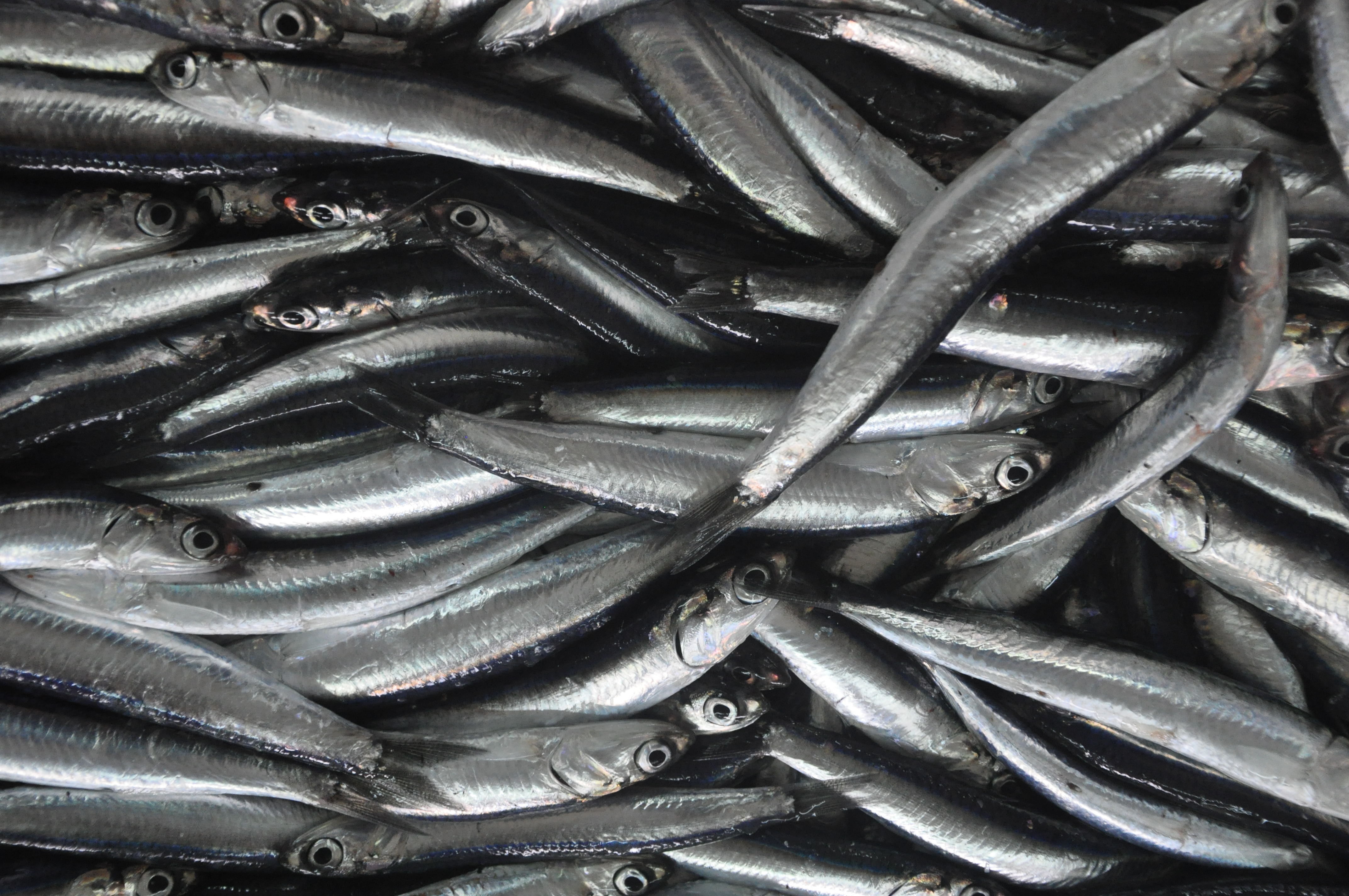
She explained to me their family’s recipe for processing the fresh from the sea anchovies while she took me around to meet with the artisans and observe the process. It was fascinating and quite enjoyable; hearing the stories while being in such a pleasant atmosphere with a group of people who obviously took great pride in their work.
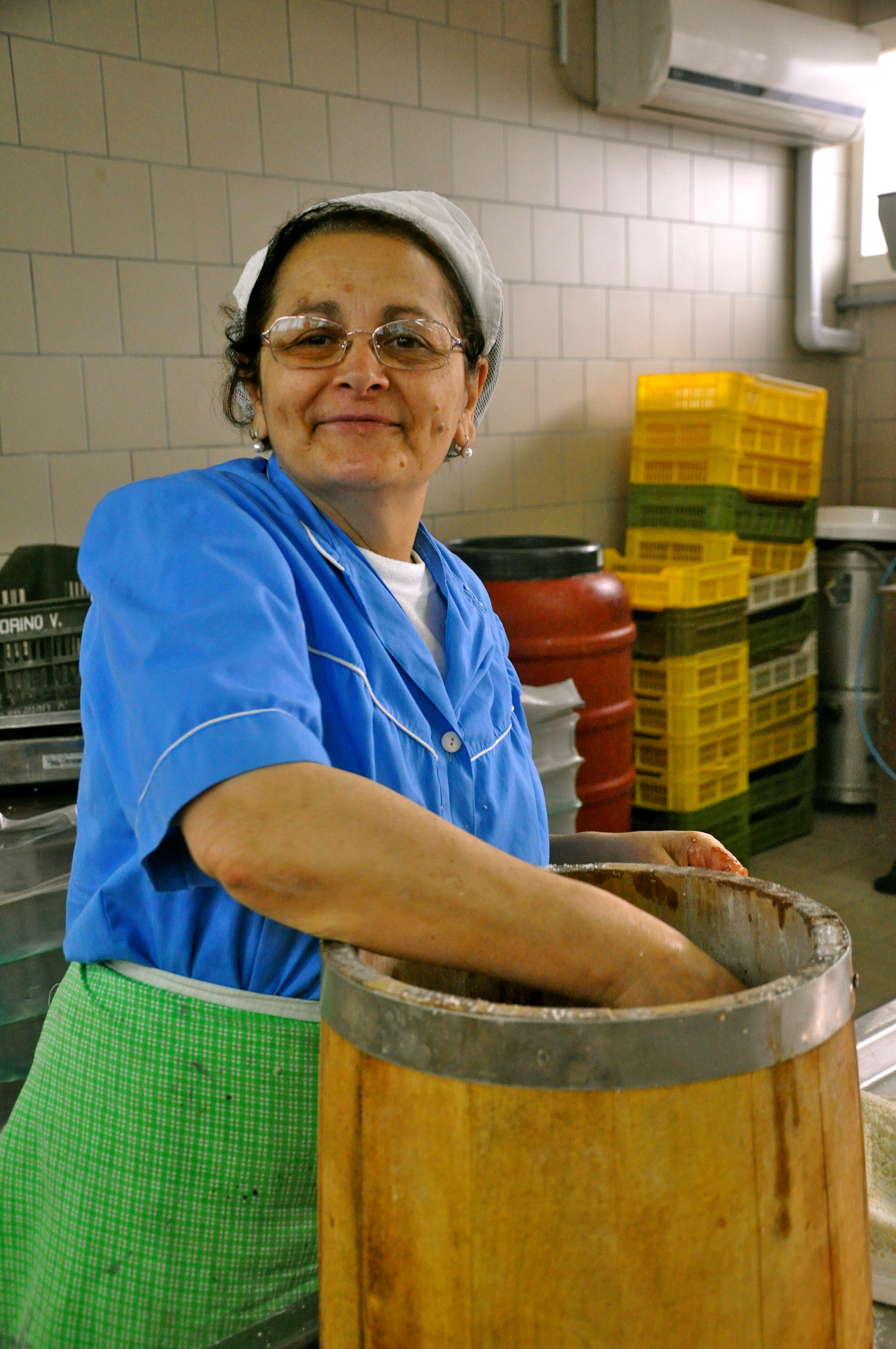
One by one, the anchovies were carefully cleaned and deboned, then arranged side by side in barrels made of oak or chestnut wood – alternating them in horizontal and vertical rows, which were all covered with a generous layer of coarse sea salt. When the barrels were full, they were tightly covered with their wooden lids and a heavy weight was placed on top. Then the barrels were set aside to be stored in a dry, dark place for 8 to 12 months, until the anchovies were perfectly salt-cured.
In the meantime, the already salt-cured anchovies were being separated one by one and carefully arranged in glass jars sprinkled with additional salt. Once full, the jars were securely covered with their lids and set aside for the final stages of preparation before commercial production.
Preserved anchovies are a key ingredient in the Campanian kitchen, either salt-packed or packed in oil. I use them regularly at home in Massa Lubrense to give that extra burst of briny, fish flavor to many of the local specialty dishes cherished in traditional homes throughout the region. Spaghetti with walnuts and anchovies, for instance, which is a pasta dish from the Amalfi Coast that utilizes them deliciously or, sautéed broccoli rabe with anchovies, a vegetable side dish that is commonly prepared in the autumn and winter months, when broccoli rabe thrives in the mineral-rich lands of the countryside. Or else, they mingle perfectly when whisked together with extra-virgin olive oil, freshly squeezed lemon juice, minced fresh parsley (and/or fresh or dried oregano), minced garlic, and salt, for a light condiment to spoon over grilled or roasted fish.
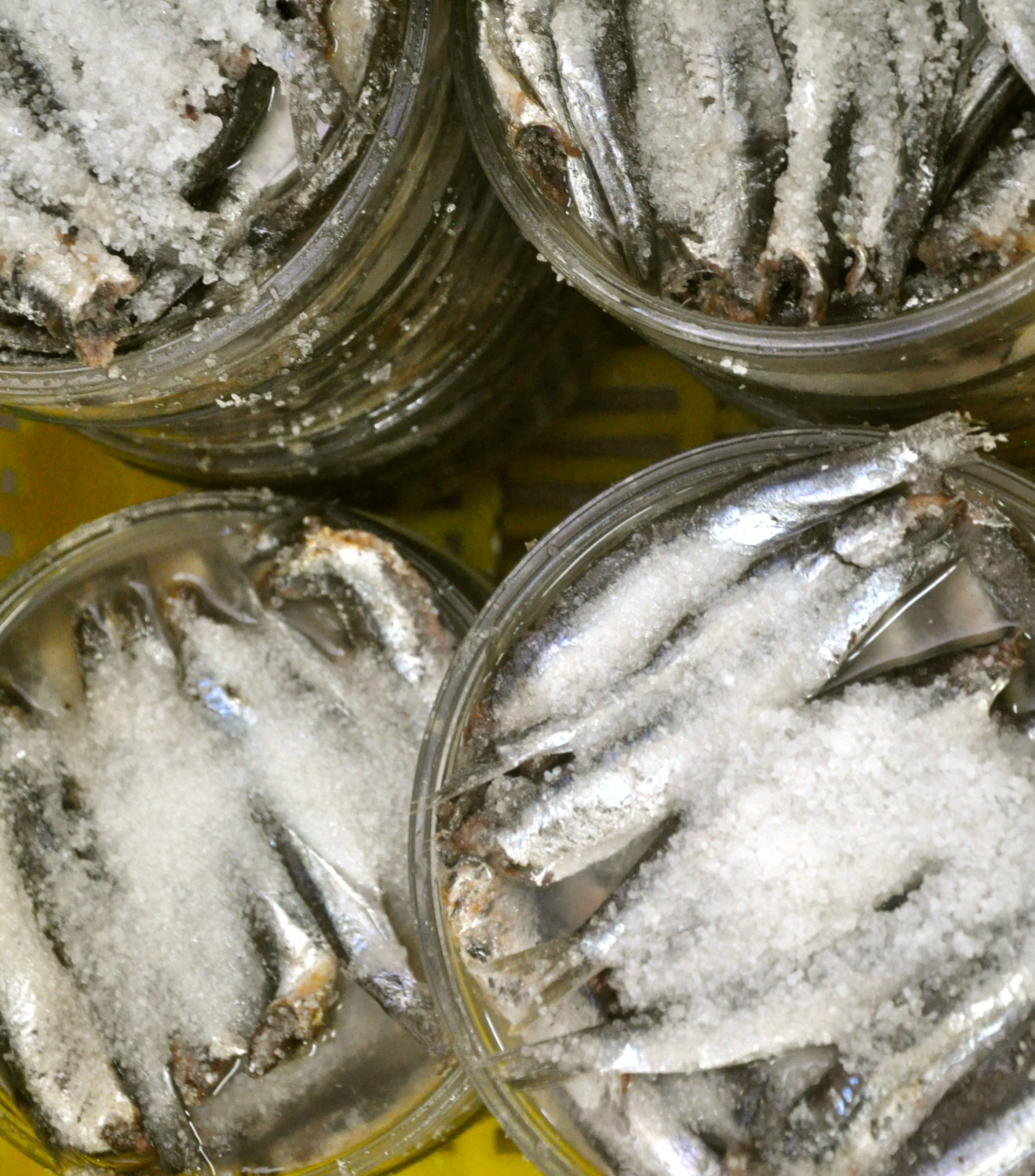
And just when I was thinking that Delfino Battista’s contribution to the commercial anchovy world couldn’t get any more intriguing and delicious, Gina introduced me to their renowned Colatura di Alici di Cetara, which is an anchovy sauce (liquid) created long ago by the Cistercian Monks of Amalfi that was derived from GARUM —the fermented fish sauce commonly used by the Ancient Romans as a condiment to season their food.
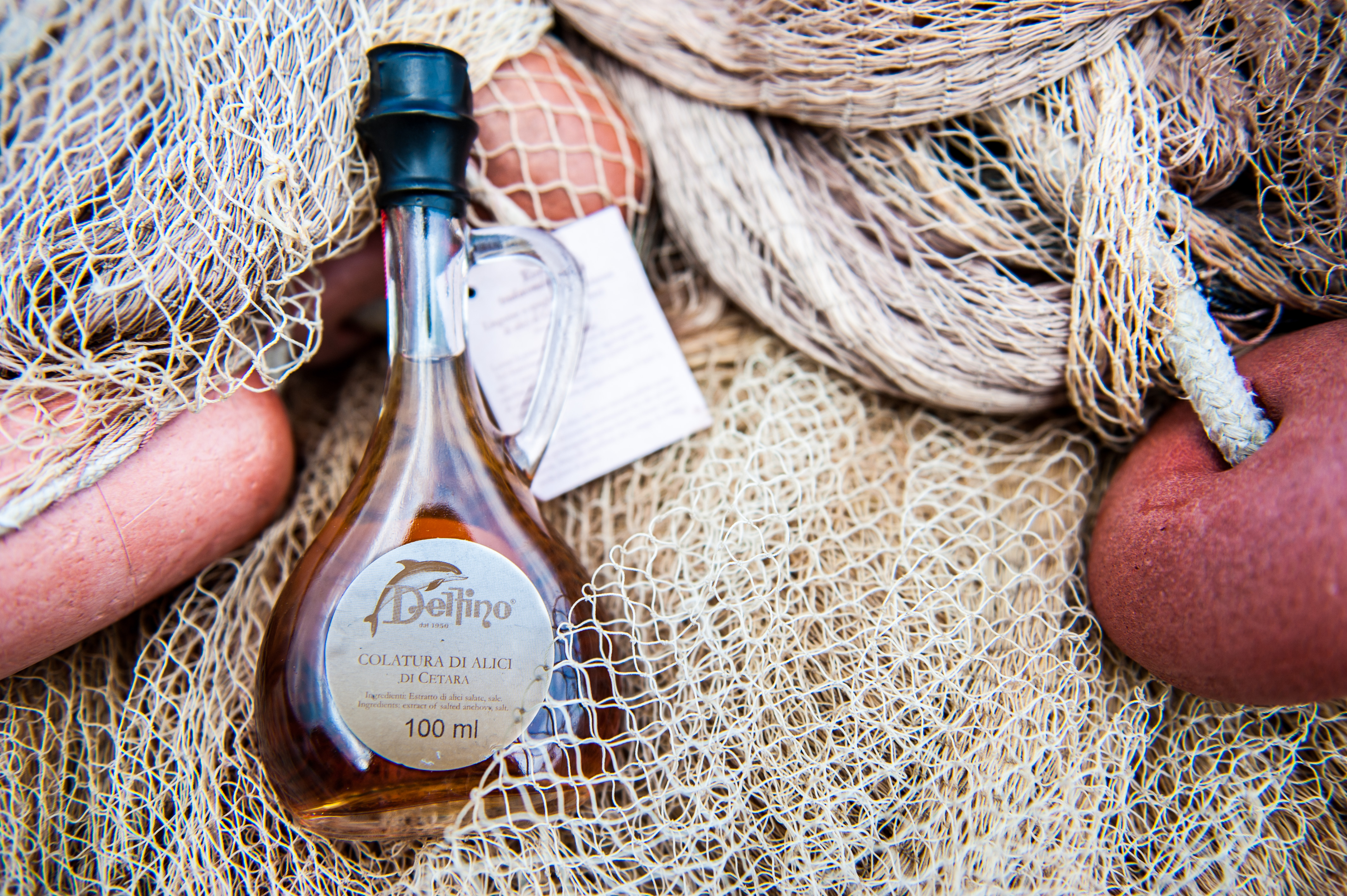
After the anchovies have been salt-cured for months in the wooden barrels, a small hole is made on the bottom of each barrel to provide a space for the strongly flavored, amber-colored liquid inside to be filtered out. This liquid is the colatura di alici, the result of the slow, careful process of the maturation and pressing of the salted anchovies.
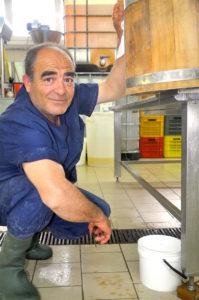
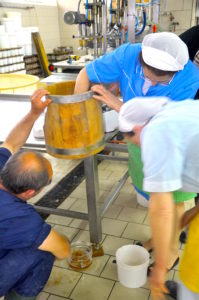
Needless to say, the colatura di alici di Cetara ranks high on my list of key ingredients to have readily available in the cupboard for delicious cooking, Campania style. Describing the flavor is a bit complex —salty, fishy (but not too fishy), elegant. What is more than clear, though, is that its presence will assuredly transform any complimentary pasta or vegetable dish into something highly palatable — whether it is used on its own to give a burst of salty, fish flavor to the finished dish or combined with a few other simple ingredients for a crude condiment to toss with the pasta or vegetable side dish.
In Cetara, the colatura di alici is considered a multi-purpose seasoning, a tasty salt substitute with a subtle fishy kick, if you will. And although it is primarily used to season pasta and vegetable side dishes, Gina told me that it is a mainstay on tables in traditional homes to season most of their food instead of salt since it is so highly regarded by the Cetaresi people – much like the ancient Romans love-affair with GARUM. 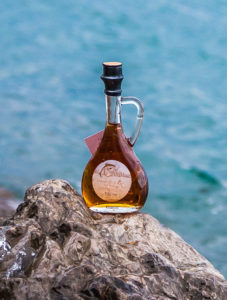
In traditional homes, the colatura di alici is most often times combined with extra-virgin olive oil, minced fresh flat-leaf parsley, minced garlic, grated lemon zest, and slivered fresh hot red peppers for a delicious crude condiment to toss with spaghetti or linguini, which is the signature Cetaresi pasta dish. But it is also commonly tossed with chopped tomatoes, extra-virgin olive oil, minced garlic, and dried oregano to make a light, refreshing summer salad to pile over crusty slices of rustic bread for an any time of day light meal or snack or to be served as a part of an antipasto course. Or else, you can whisk it together with extra-virgin olive oil, minced fresh flat-leaf parsley, minced garlic, dried oregano, and slivered fresh hot red peppers to make a delicious condiment to toss with boiled potatoes or drizzle over the top of sautéed broccoli rabe or any other bitter green vegetable for a traditional vegetable side dish, Cetaresi style.
≈
For more info → Delfino Battista
Address: Corso Umberto 1, 58, 84010 Cetera (SA)
Telefone: 39 089 261069
≈

